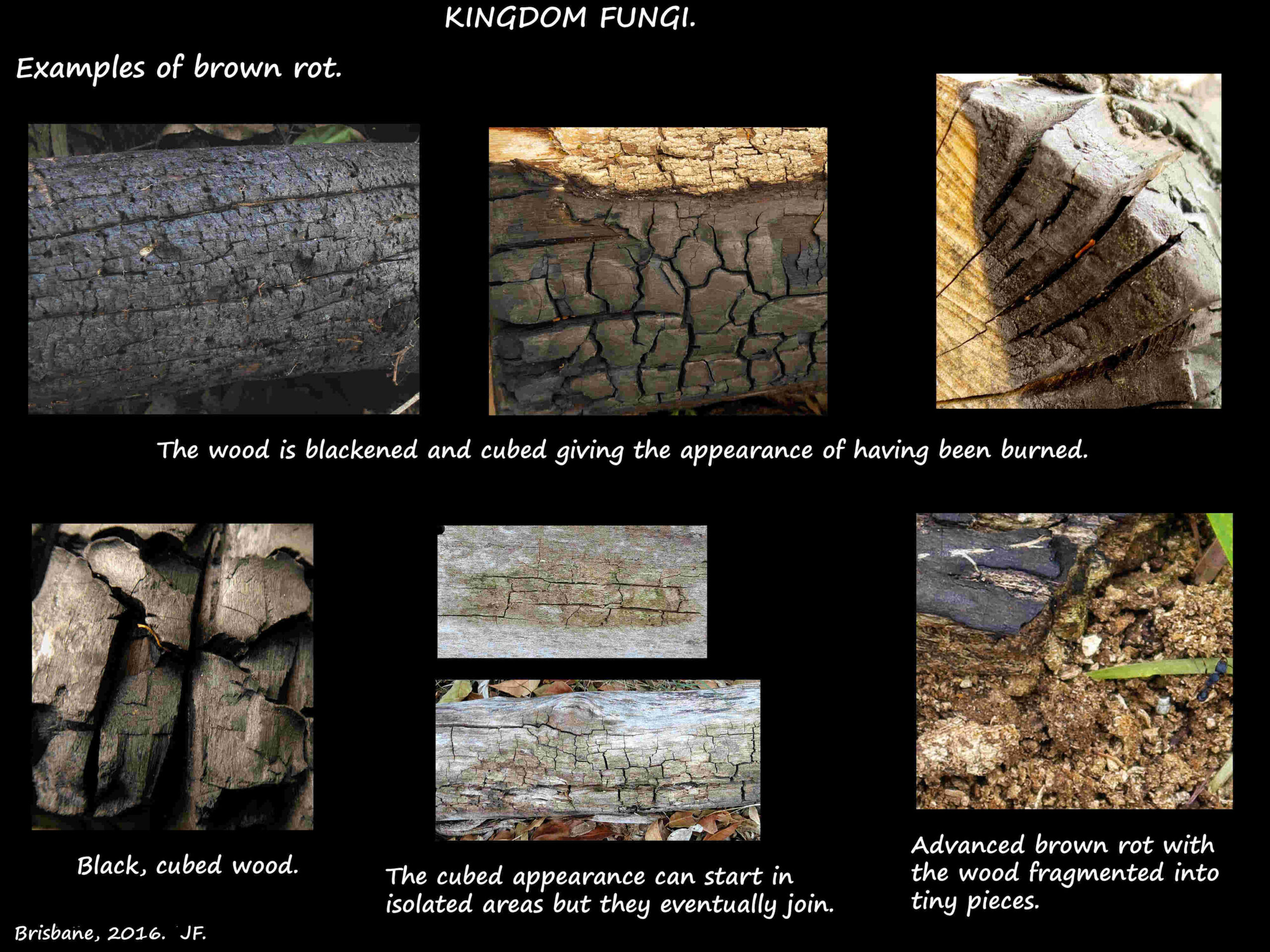Brown & Soft rots.
Brown or cubical rot.
Brown-rot fungi attack both cellulose and hemicellulose leaving the lignin mostly intact.
These fungi have very few hyphae and the initial attack is chemical involving hydrogen peroxide (H2O2) which
easily diffuses through the wood causing damage to areas remote from the fungus.
This is followed by the release of enzymes.
Brown-rot can be produced by treating wood with H2O2 alone.
The fibrous texture of the wood, due to cellulose, is lost early in the process.
As the wood dries it shrinks and breaks into roughly cube shaped pieces, brown or dark brown in colour due
to the remaining lignin. It then crumbles easily.
Most brown-rot fungi are Basidiomycetes, frequently the polypores which form leathery brackets or shelves.
Common genera include Schizophyllum and Fomes.
Soft rots.
Soft rots are caused by both fungi (Ascomycetes) and bacteria.
The fungi produce cellulase which attacks cellulose and hemicellulose causing microscopic cavities in the cell walls.
The enzymes only affect areas where there are hyphae, usually on the surface, and with little effect on lignin.
The wood may become brown with cracking patterns like brown-rot or it may have a bleached look.
They grow more slowly than the other wood-rots and do not affect living trees.
J.F.


